Flowers for the Victorian Farm Garden
When early settlers travelled to New Zealand they brought plants with them from their home land and carefully nutured them on the sea journey. Some of these treasured plants continue to be loved and looked after through the generations and remain in gardens today.
The flowers, seeds and cuttings at the Halfway House have been sourced from people and places where their provenance, ideally before 1900, can be explained.
The flowers are photographed in the Halfway House garden.
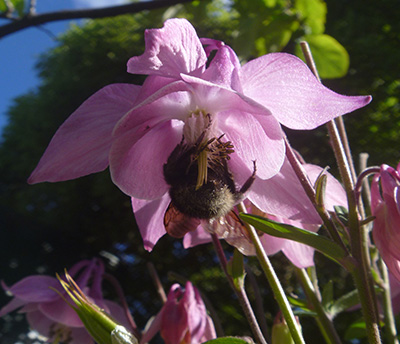
Acquilegia.
Seeds harvested from George Walker’s 1875 farm cottage garden near Ongaonga, Central Hawke’s Bay. The original plants are no longer growing on the farm. The bumble bee in this blossom seems very content!
Catalogue: 1878 W.W. McCardle, Masterton.
Gifter: Claire Bibby.
Planted: 2017. Horse paddock fence line.
Bee friendly.
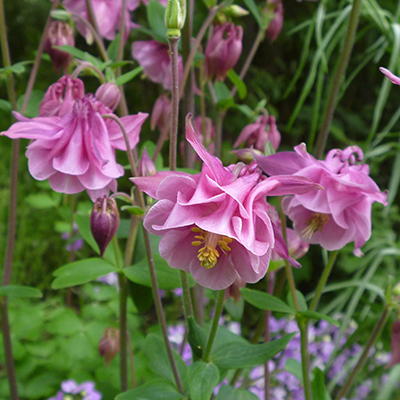
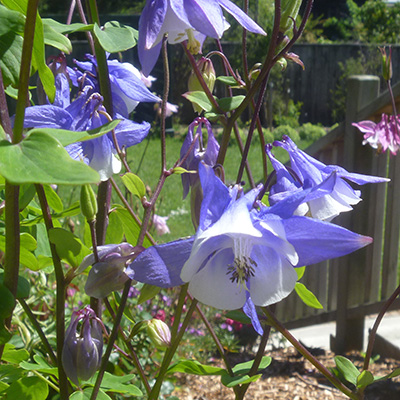

Acquilegia.
Perennial. Grandmother's Garden. This is the aquilegia that came to New Zealand with our great great grandmothers and can still be seen today thriving in gardens around homes that were built over 100 years ago. This aquilegia has long stems and multi-coloured (pink blue purple white) flowers. Great cut flowers.
Catalogue: 1878 W.W. McCardle, Masterton.
Supplier: Koanga Institute, Wairoa.
Gifter: Celia Wade-Brown Mayoral Fund.
Planted: 2017. Flower bank and horse paddock fenceline.
Bee friendly.
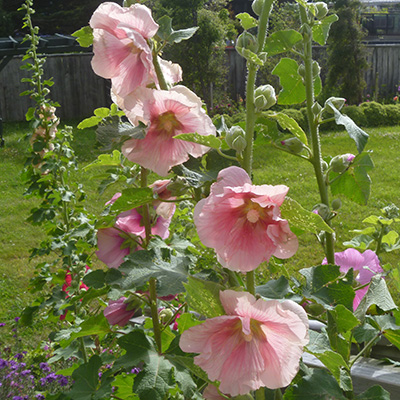
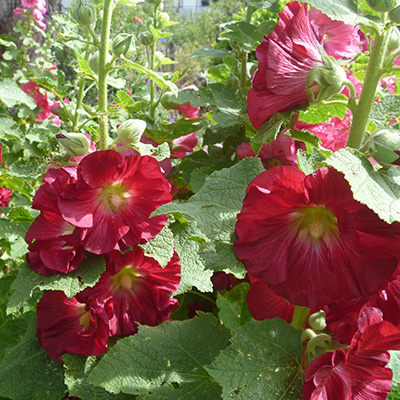
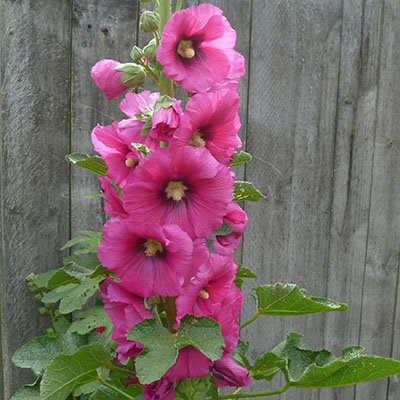
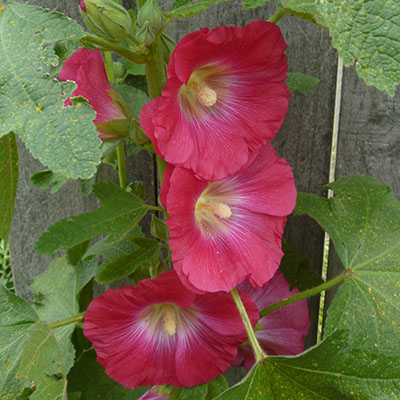

Alcea - Hollyhock, assorted.
Single blooms sourced from private gardens.
Catalogue: 1871-1872 Thomas Allan.
Gifter: Carolyn Lutter.
Planted: 2018. Seeds scattered all over the garden.
Butterfly and bee friendly.
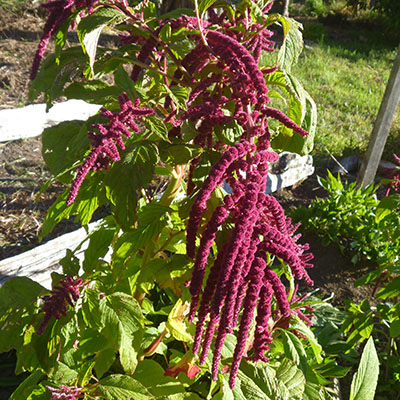
Amaranthus caudatuse - Love Lies Bleeding.
Annual growing to 3 feet. Companion for corn, pumpkins, kumara. Loves growing with French marigold, zinnia, cosmos and sunflowers.
Supplier: Koanga Institute.
Planted: 2018. Kumara bed and flower beds.
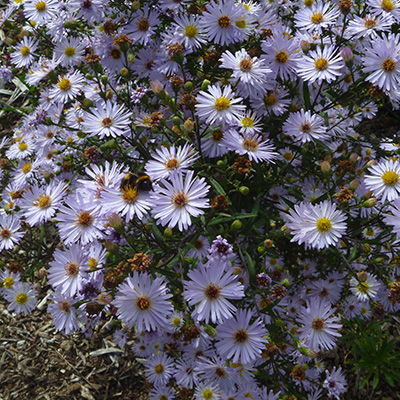
Asteraceae – Aster – Michaelmas Daisy.
Gifter: Pamela Gainsford.
Planted: 2018. Flower bank. Rose Arbour.
Butterfly and bee friendly.

Billbergia nutans - Queen's Tears
This intersting bromeliad originates from South America and absorbs moisure from its leaves and flower head. The name Queen's tears is said to be from the dripping nector of the flower. It was gifted from the garden of the historic Golder Cottage in Upper Hutt.
The Sydley Living Museum website informs that the species is named for the Swedish lawyer and botanist Gustav Billberg (1772-1844), and from the latin ‘nutans’ – meaning nodding, a reference to the hanging growth habit of the flowers.
Gifter: Golder Cottage, Upper Hutt.
Planted: 2017. In stump.

Borage.
Attracts bees into the garden. Great tasting honey. Originally from the Mediterranean region.
Gifter: Claire Bibby.
Planted: 2017. Orchard lawn, horse paddock fence line.
Butterfly and bee friendly.

Calendula officinalis - Pot marigold - English marigold.
Calendula officinalis was advertised in New Zealand pharmacy's as early as 1855, as an essential remedy for punctures, cuts and lacerations.
“Calendula Officinalis (Marigold) in its several varieties is another fine annual for bedding - out, flowering continuously all the season. They may be obtained in two distinct colours, orange and lemon. The flowers are large and well -formed, and the plants grow about a foot and a half high.” Evening Post. Gardening Notes. 6 August, 1898.
The yellow calendula is from Rose Street, Waipawa, the former home of Mary Glover Bibby (1867-1937). Edward, Mary's son, told his grand daughter Jan, that the family amusement was to refer to the flower's as "Marygold".
Gifter: Jan Gosling, Waipawa.
Planted: 2018. Flower bank.
Butterfly and bee friendly.

The orange calendula is from the old gardens of Picton, where it is very popular.
Gifter: Carolyn Lutter, Churton Park.
Planted: 2018. Flower bank.
Butterfly and bee friendly.

Campion, Silene dioica.
Wildflower from the British woodlands.
Gifter: Carolyn Lutter.
Planted: 2018. Flower bank and fence line.
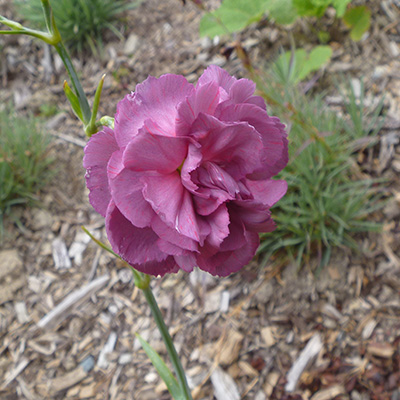
Carnation, Maori Chief.
Lavender grey/mauve grey in colour.
"John Greenaway, Canterbury, New Zealand, introduced the first batch of 'florists' flowers including Conqueror, Favourite, Maori Chief; Conquest, Rifleman and others." The Star, The Carnation, 22 January 1895.
"In the open class, Messrs Kerr and Barnett secured the first prize for six carnations and six picotees, with a very fine stand, in which the "Maori Chief " carnation was especially worthy of notice." The Star, The Christchurch Horticultural Society, 4 January 1882.
Supplier: Watson's Garden, Otaki.
Gifter: Patricia Apperly, Claire Gleeson.
Planted: 2018, 2019. Flower bank.
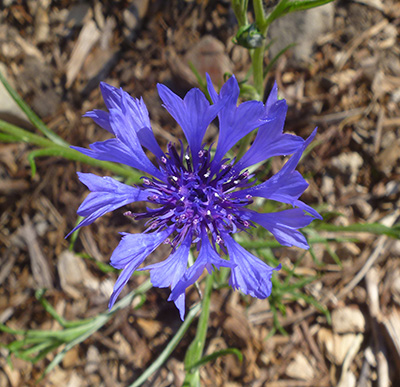
Centaurea cyanus - Cornflower - Emperor William.
Annual. An ancient variety of cornflower from northern Europe, a sky blue star flower. Companion plant to the European grains, perfect in a cottage garden collection or border. Self seeds easily. This flower is the World War One symbol for the French, in the same way the red poppy is the remembrance flower in New Zealand.
Supplier: Koanga Institute, Wairoa.
Gifter: Celia Wade-Brown Mayoral Fund.
Planted: 2017. Flower bank and horse paddock fence line.
Bee friendly.
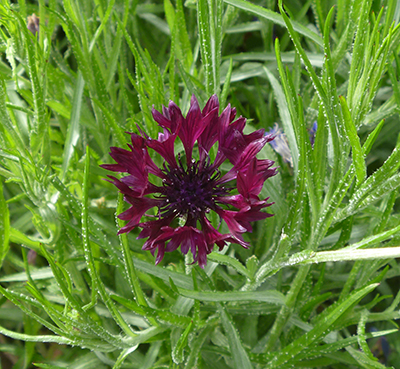
Centaurea cyanus - Cornflower - Ruby Gem.
Annual. Stunning, classic cornflower, dark maroon flowers. Good cut flower, flowering from spring into summer. Great at the back of a border.
Supplier: Koanga Institute, Wairoa.
Gifter: Celia Wade-Brown Mayoral Fund.
Planted: 2017. Flower bank and horse paddock fence line.
Bee friendly.
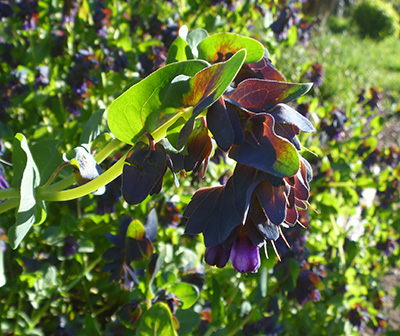
Cerinthe major - Honeywort, Greater Honeycomb.
Attracts bees and is a good filler plant, the size of a small shrub. Originally from the Mediterranean region. Cerinthe major, greater honeycomb, and cerinthe minor, lesser honeycomb are advertised for sale by W Hislop, Nurseryman and seed merchant of Christchurch, in The Press, 11 August, 1865. They are included in a list of plants described by Mr Hislop as ‘choice flower seeds’.
Newspaper: The Press, 11 August, 1865.
Gifter: Claire Bibby.
Planted: 2017. Orchard lawn, horse paddock fence line.
Bee friendly.
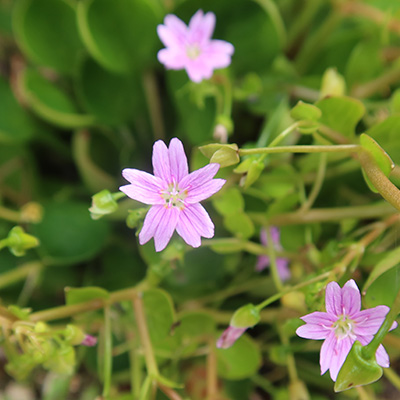
Claytonia sibirica - Miner's Lettuce
A native to California. Believed to have found it's way to New Zealand through the gold rush days. Related to Claytonia rubra, also known as Miner's Lettuce.
Gifter: Carolyn Lutter.
Planted: 2018. Growng along the top of the flower bank.
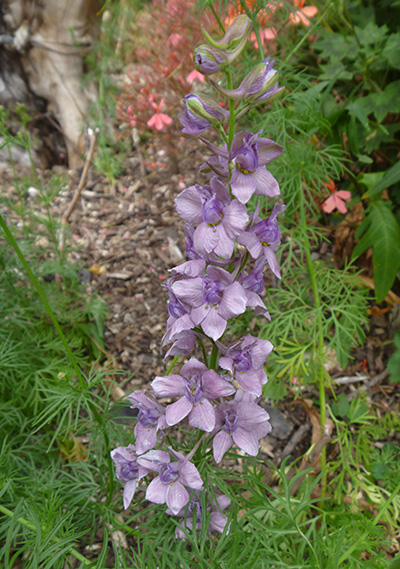

Delphinium - Larkspur - Earl Grey.
Annual. This stunning larkspur is a classic example of how much our modern flowers have changed . It is an old fashioned heritage larkspur with tall open growth and open flower spikes, instead of the far more compact plants and flower spikes of modern selections.
Supplier: Koanga Institute, Wairoa.
Gifter: Celia Wade-Brown Mayoral Fund.
Planted: 2017. Horse paddock fence line. 2018. Rose Arbour. 2019. Flower bank.
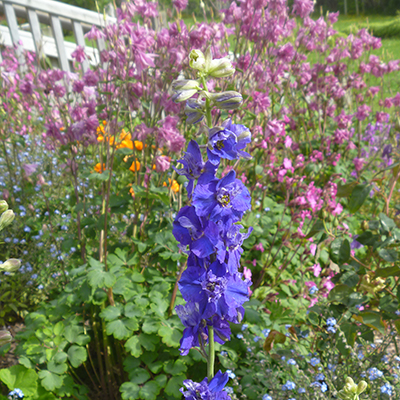
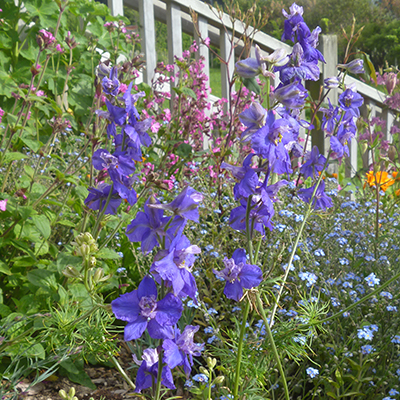
Delphinium - Larkspur - Dark blue [unknown].
Annual. An old variety of larkspur rarely seen today. It came from the garden of Phoebe Cooper of Airlie Road in Plimmerton. Phoebe was a school teacher and gave seed to her school teacher colleague, Ruth Bloxham, who passed the seeds onto her neice, one of our heritage gardeners. The blue from the crushed petals is so rich it can be used as ink, or dye.
Gifter: Ruth Bloxham
Planted: 2017. Flower bank.
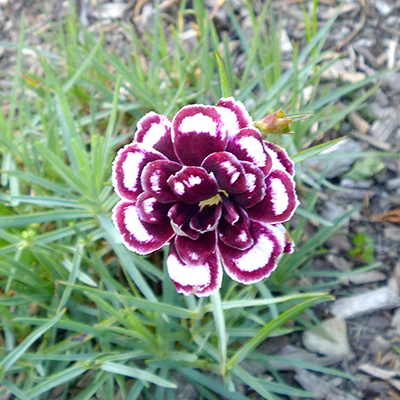
Dianthus - Dad’s Favourite.
Semi-double flowers with white edges, wine red fringes and a purple centre. Mat forming. Very fragrant. This flower may be an original Scotch Pink, or Laced Pink of Paisley, cultivated by the weavers of Paisley, Scotland. Perennial.
Roy Genders in his book Garden Pinks (1962) writes:
“It was the black and white or Laced Pink, Lady Stoverdale, raised by James Major in 1772 that brought about so much interest in the flower at Paisley where it was realised that it was possible to raise others of the most intricate designs. By 1840 as many as a hundred different varieties of the Laced Pink were known to specialist growers around Paisley, and clubs to foster the cultivation and exhibition of the Laced Pink sprang into being everywhere…(p 15).
“The object of the Paisley weavers was to impart the characteristics of rounded or smooth edges to the flowers, thereby eliminating the serrated petal edges of dianthus plumarius. At the outer edge of the petals was to be a band of black, with which colouring the blooms were also marked at the centre. The variety was recognised by the degree of black about the bloom.” (p 16).
“To those south of the Border, the pinks of Paisley became known as Scotch Pinks… By the middle of the nineteenth century it is probable that the Laced Pinks had ceased to exist in Paisley, in spite of their hardiness, exterminated as it would appear by adverse conditions which were now being experienced through the industrialisation of that area.” (p 15).
“Perhaps the old Scotch Pinks still survive in the recently discovered and re-named Dad’s Favourite. This variety was found in a cottage garden in Berwickshire by Mr. A. J. Macself. He re-named it Dad’s Favourite as the old cottager had mentioned that it had been his father’s favourite flower." (p 16-17).
Note: Albert James Macself (1878-1952) wrote gardening books and edited the British magazine Amateur Gardening.
Supplier: Mauways Nursery, Hunterville.
Gifter: Claire Bibby.
Planted: 2018. Flower bank.
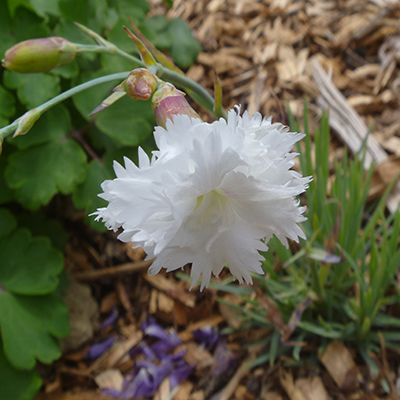
Dianthus - Mrs Sinkins.
Heavily scented. White ruffled double flowers. Perennial.
It was raised by Thomas Sinkins, Master of Slough Workhouse and named after his wife Catherine Sinkins. The flower is incorporated in the coat of arms of the Borough of Slough, England. The flower was first produced commercially by Charles Turner's Royal Nursery in 1868 (Refer Slough History Online).
Supplier: Mauways Nursery, Hunterville.
Gifter: Claire Bibby.
Planted: 2018. Flower bank.
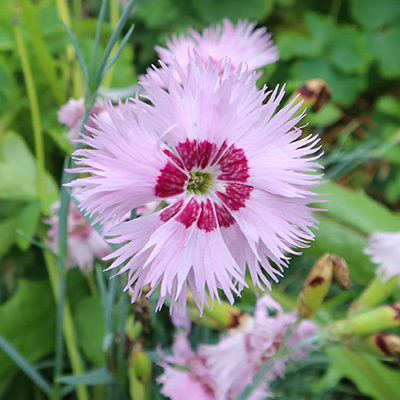
Dianthus - unknown.
Strongly scented. SIngle flowers, pink serrated edge with dark purple centre. Florifous.
Gifted by Jan Simmons of Udy Street. Grown by her grandmother Eleanor Simmons in the 1940's in her garden at Maida Vale Road, Roseneath and passed down through the generations. Jan trained as a horticulturalist in the 1970's at Massey University and at the time of gifting the flower, had sold her large garden and magnificent two-story villa and wanted to share her dianthus with others, to keep it going.
The flower looks similar to Little Jock. Dr Keith Hammett, dianthus breeder, was consulted and said two Little Jocks were released, one pre 1930, then one later in the fifties. He suggested it could also be a self-pollinated unique variety.
In 2022, a member of the Hutt Vallery Horticultural Society said that when she walked into the hall for the judging, the scent of this dianthus, in a posy, filled the hall with fragrance.
Gifter: Jan Simmons, Lower Hutt.
Planted: 2021. Rose Arbour path.

Dicentra spectabilis - Bleeding Heart. (x3).
Perennial with tiny pink and white heart shaped blooms that appear on long arching stems in late spring and summer.
Catalogue: 1872-1873 William Martin, Fairfield Nursery, Saddlehill Road, Green Island, Dunedin.
Supplier: Twigland Gardener’s World, Glenside.
Gifter: Celia Wade-Brown Mayoral Fund.
Planted: 2018. White scented garden.
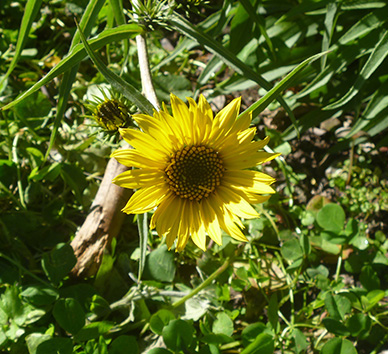
Helianthus Maximiliani - Sunflower Maximillian.
Biennial. North American prarie sunflower. Starry yellow flowers in autumn. Edible rhizome. Named for the naturalist Prince Maximilian of Wied-Neuwied, Germany, (1782-1867) an early botanical explorer of North America from 1832 to 1834.
Catalogue: 1878 W.W. McCardle, Masterton.
Supplier: Koanga Institute, Wairoa.
Gifter: Celia Wade-Brown Mayoral Fund.
Planted: 2017. Horse paddock fence line. 2020. Transplanted to flower bank.
Butterfly and bee friendly.

Kniphofia rooperi - Torch Lily - Red Hot Poker. (x3).
Originating from South Africa, the Kniphofia was known as the Torch Lily to the Victorians, a more romantic name than the familiar Red Hot Poker of the 20th century. The plant is named for Johann Hieronymus Kniphof (1704-1763) German physician and botanist.
In the Lyttleton Times of 1895, it was recommended as useful for large gardens, for planting in borders among the shrubs and described as "Brilliant in colour". Has strappy grassy leaves with a tall flower spike in bright orange. The Bellbird and Tui enjoy the flower nector.
Gifter: Lorna Webb.
Planted: 2021 along the borders of the horse paddock fenceline, streambank and grassy wetlands.
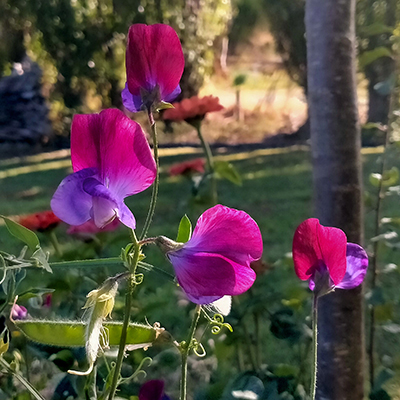
Lathryus odaratus - 'Original' - Sweet pea.
The genuine wild sweet pea. The seed was collected from wild flowers in Sicily in the 1970's. All sweet peas are derived from the original. A late 18th century cultivar of the original is 'Painted Lady' which was recorded growing wild in New Zealand in 1843 as follows....
On 15th December, 1843, Missionary William Colenso and his Maori guides were descending a hill to the seaside somewhere between Mohaka and Wairoa. William Colenso wrote the following:
"At 4 p.m. we descended to the seaside, where we halted by a stream to roast a few potatoes. I was gratified to find the English Sweet Pea (Painted Lady, var.) flourishing luxuriantly in this solitary spot, when or how introduced must be quite conjectural."
Extract from William Colenso's journal, "William Colenso, Journeys, 1843-1846" courtesy Hocken Library, Dunedin.
Newspaper:
The Otago Witness, 16 August 1851. Sweet-pea flowers referred to as 'kept in bloom all winter'.
Supplier: Yates Seeds.
Planted: First planted in 2019 along the horse paddock fenceline and orchard.
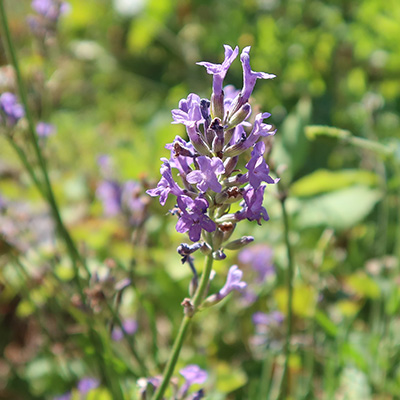
Lavender Angustifolia (Vera) - Lavender True
The most fragrant lavender variety, it has been used in perfumes, soaps and potpourris for centuries.
Supplier: McGregor's Seeds.
Planted: First planted in 2020 on the flowerbank.
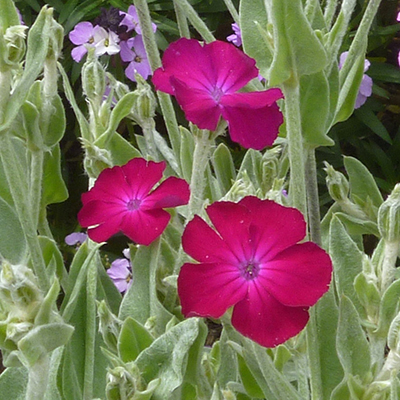
Lychnis coronaria.
“Lychnis coronaria. A showy plant, thriving on almost any soil, and growing 2ft or 3ft high. The leaves are covered with a soft woolly substance, and the flowers are either crimson or white. There are also double varieties.” Lyttelton Times, Flower Border, 4 September 1888.
The Te Aute store, north of Waipawa, constructed in 1858, became a coaching stop in 1860, with stables, where horses could be changed, and travellers could enjoy refreshment. A chance visit by one of our heritage gardeners, when the owner was clearing lychnis from around the edges of the brick pathway, resulted in seed heads being gifted to the Halfway House garden.
Gifter: Bruce Keatley, 1858 Te Aute Store.
Planted: 2019. Flower bank.
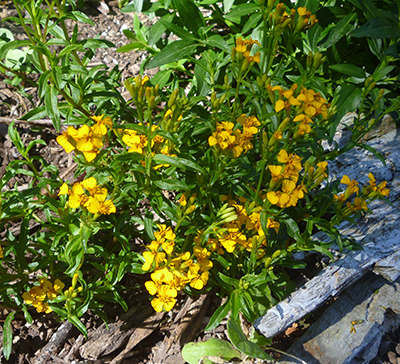
Marigold Hyssop.
Perennial. Border edge vege companion with starry bright yellow flowers flowering all summer into late autumn.
Supplier: Koanga Institute, Wairoa.
Gifter: Celia Wade-Brown Mayoral Fund.
Planted: First planted 2016. New plants in 2022 on flower bank.
Butterfly and bee friendly.
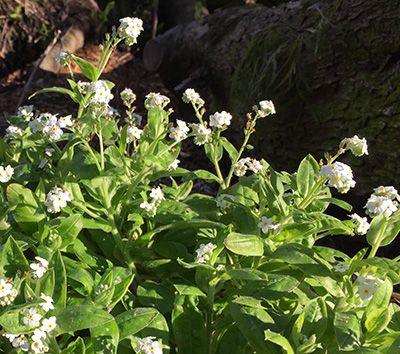
Myosotis. Forget-me-not, white.
Myosotis. We replanted this from the stream bank at The Halfway House, into the woodland garden. We are not sure if it’s a remnant from the garden, or if the seed blew over from the garden centre next door. More research is needed to find out if the white field forget me is a Victorian arrival in New Zealand or came to the country after 1900.
Planted: 2017. Stumpery.
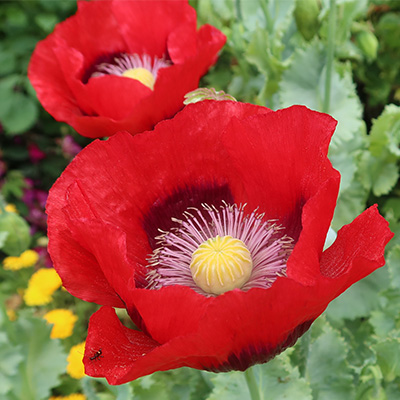
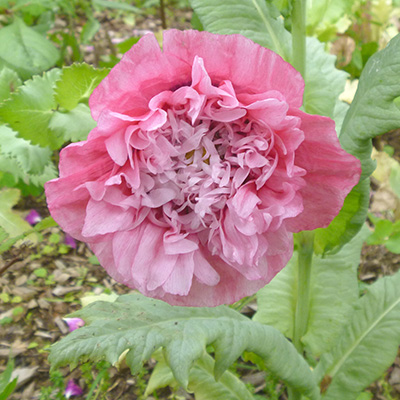
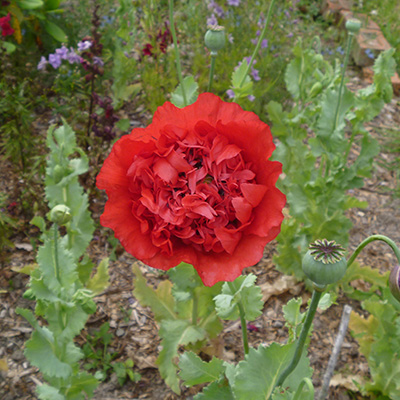
Papaver orientale - poppy.
Catalogue: 1878 William Wilson McCardle, Wellington.
Supplier: Koanga Institute, Wairoa.
Planted: 2019. Rose arbour

Pelargonium - Appleblossom Rosebud.
John Tradescant brought the pelagonium to England from South Africa in 1631. Appleblossum, introduced in 1870, is said to be a favourite pelargonium of Queen Victoria. Ours grew from a cutting that was taken from a plant in the garden of Kate Bibby's cottage at Glen Appin, Ongaonga.
Gifter: Ted & Alison Bibby.
Planted: 2018. Flower bank.
Primula
Originally gathered as a seedling in about 1963 from a clump growing at a gravesite at the Armed Constabulary camp at Lake Waikaremoana. Tendered carefully at a farm garden at Frasertown, it eventually came to Waipukurau where, on her 92nd birthday, the owner gifted a clump from her garden.
Gifter: Alison Carter nee Bibby.
Planted: 2023. Fernery.
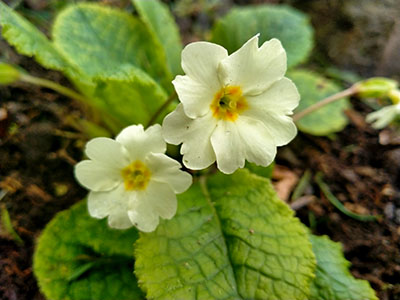
Primula vulgaris - English Primrose.
Native to Northern Europe, the primrose came to New Zealand with early settlers. It grows naturally beside streams, in orchards and in woodland areas.
"Among the flowers in bloom this month, we have the cowslip, primrose, violet, and daisy. Surely, none of us, not even those who have not seen the green lanes and verdant meadows of the old country these 16 years past, can forget these delightful little flowers of our childhood. They are flowers that have through life an indelible impression upon the memory, which time cannot efface, and which, in after life, call forth many pleasing and may be profitable reflections. Of what do they remind us but of the sunny days of youth, when, in joyous company we gambolled on nature's carpet, thoughtless of the fleeting present, and free from anticipation, without a thought upon the future? Age may creep upon us early settlers, but our memory is good and never will we forget our lovely favorite flowers." The Colonist, 27 October 1857.
Gifter: Jane Needham.
Planted: 2021. Fernery.
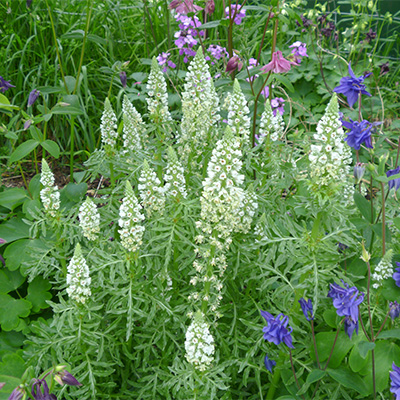
Reseda alba - Mignonette, white.
Heirloom. Wild Mignonette. A delightful old time favourite with long densely packed graceful spikes of White flowers with brown anthers. Can be used on its own or in mixed summer bouquets. Best sown direct where it is to be grown.
In 1852, Douglas Mary McKain, mother of John Ward McKain of Halfway House, recorded her following entry in her Diary and Commonplace book "1852 Sepr 15. I sowed Lavender seed in pot. Oct 27th. Sowed Mignonette."
Supplier: Kings Seeds
Planted: 2020. Flowerbank, Horse paddock fenceline.
Bee and butterfly friendly.
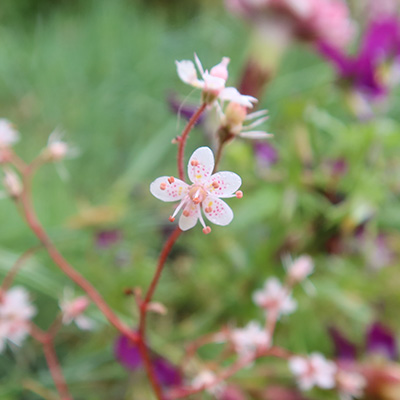
Saxifraga umbrosa - London's Pride
In 1798, Thomas Mawe and John Abercrombie published The Universal Gardener, or a Garden Dictionary of Gardening and Botany and had this to say about London's Pride:
"Umbrosa saxifrage, commonly called London's Pride or None So Pretty... This is an old inhabitant of our gardens, and was formerly planted for edgings, though it is rather improper for that purpose, but being disposed in tufts about the borders it will effect a property variety."
We planted ours as an edging, along the top of the flower bank, mixed in with Heartsease. It hasn't done well here and was later relocated to the rose arbour.
Gifter: Tina McKevett.
Planted: 2021. Rose Arbour.
Schizostylis coccinea aka Hesperntha coccinea
Bright red autumn flowering perennial. Likes growing along streams and in damp places. Native to South Africa. Looks similar to an iris with strappy stem. Does not have a bulb or tuber and is rooted.
Catalogue: 1872 Hays Annual Calendar and Description Catalogue, Auckland; 1890 H Budden List of Bulbs and Tubers, Nelson.
Gifter: Claire Bibby.
Planted: 2023. Gum tree garden.
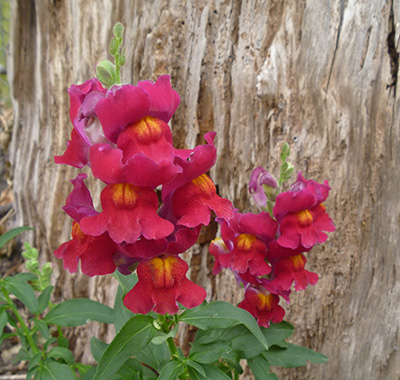

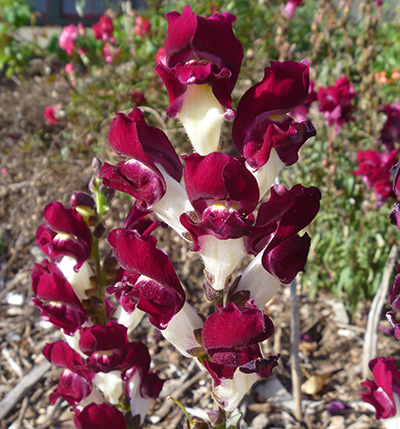
Snapdragon, Bolivian Antique.
Biennial. A mix of yellow, cerise, red etc. All mixed up and striped.
Catalogue: 1878 W.W. McCardle, Masterton
Supplier: Koanga Institute, Wairoa.
Gifter: Celia Wade-Brown Mayoral Fund.
Planted: 2017. Horse paddock fenceline, flower bank. 2018. Rose arbour.
Bee friendly.
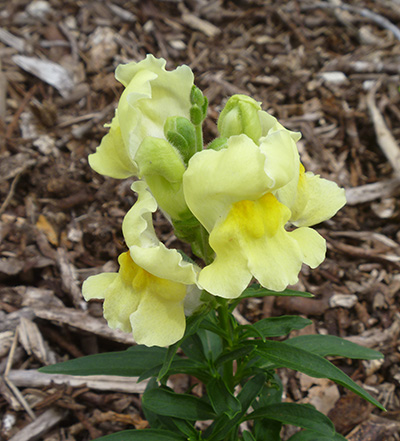
Snapdragon, Yellow.
Biennial. New Zealand heritage. A classic traditional yellow coloured snap dragon.
Catalogue: 1878 W.W. McCardle, Masterton.
Supplier: Koanga Institute, Wairoa.
Gifter: Celia Wade-Brown Mayoral Fund.
Planted: 2017. Horse paddock fence line. 2022. Rose arbour.
Bee friendly.
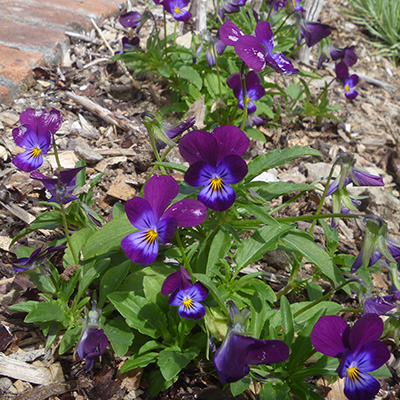
Viola tricolour. Heartsease.Johnny Jump Up.
The original wild pansy. Likes a sunny position. Flowers over a long period.
Supplier: Mr. Fothergill's Seeds.
Gifter: Claire Bibby.
Planted: 2019. Flower bank, top edging. 2021. Rose arbour.
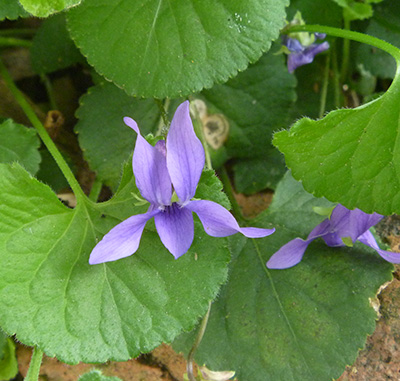
Violet [unidentified, therefore named Thelma Phillips].
The violet, a favourite Victorian flower. We wanted to know the name of this flower and consulted Clive Groves of the famous Groves Nurseries of England, founded in 1866. The nursery holds the national collection of Viola ordorata and Parma violets, which we discovered by way of 'The Story of the Clevedon Violet' on the internet, and 'The Victorian Flower Garden' by Jennifer Davies.
Clive Groves responded "I cannot match it up with any I know, I have been through photos I have taken over the last 10 years." He consulted a friend and concluded "I am sorry to say, we have drawn blank, there are many, many cultivars, but this one is very distinct in shape, so I think between us we would have named it if it was an existing variety, which means, it is either a very old one that we have lost track of or, which is probably more likely, a new seedling which has evolved from cross pollination, in which case, it might be a good idea to put a name to it, to make sure it continues, it is definately worth looking after...look after it, it’s a good one."
We then went back to our gifter, Hazel, and she told us her story of the violet, which was from her mother Thelma's garden.
Thelma Phillips (married name Thelma Mrytle) was born on 23 May 1901 and passed away in 1986. She lived all her married life in Rama Road, Kaupokonui, Manaia. At that time Kaupokonui had only a General Store, Farmer's Supply Store and a Dairy Factory (now closed). Thelma was a keen gardener and grew all the vegetables for the family of 12 children. Hazel went to Auroa school.
Hazel biked to the main road to catch the bus to Hawera High School - leaving her bike carefully concealed behind a roadside gate. She left home at age 18 years. She recalls her mother picking violets for the house and the scent of violets in her bedroom. Thelma gave Hazel a piece of the violet from Rama Road to plant in Hazel's own garden on The Terrace in Wellington when she shifted there 50 years ago. The violet was treasured all those years and gifted to the Heritage Gardeners in 2017.
Photo of violet double white to come
Violet double white.
A strongly scented double white violet.
Gifter: maddy schafer.
Planted: 2021. Flower bank.
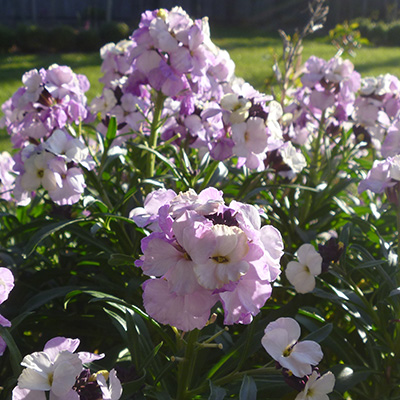
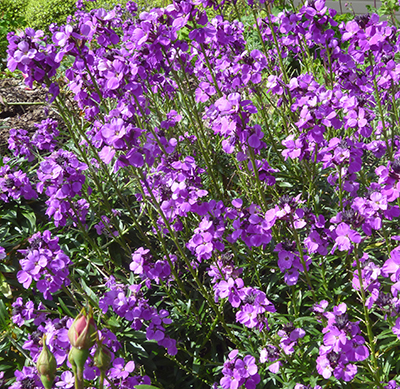
Wallflower, Henrys Dwarf.
Biennial. New Zealand Heritage. Low growing, mixed colour, scented wallflower, from plain white to mauve to mixed with yellows. They flower all winter and early spring.
Catalogue: 1878 W.W. McCardle, Masterton. Specifically, listed, colours of sulpher yellow and orange.
Supplier: Koanga Institute, Wairoa.
Gifter: Celia Wade-Brown Mayoral Fund.
Planted: 2017. Flower bank and horse paddock fenceline.
Butterfly and bee friendly.
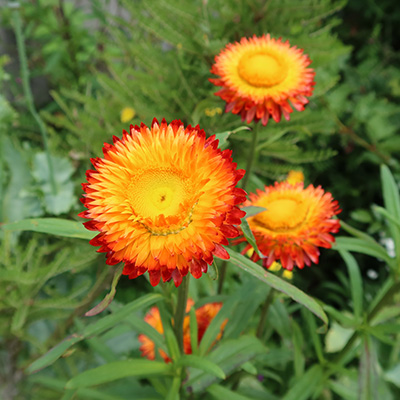
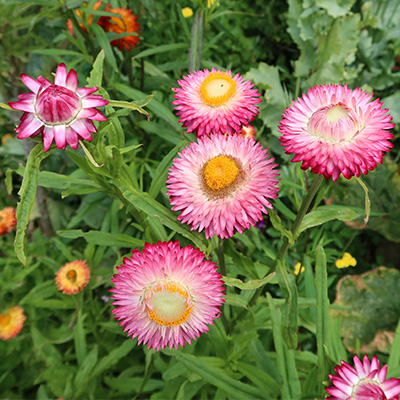
Xerochrysum bracteatum, Strawflower.
Popularly known as the strawflower, everlasting flower or paper daisy, this perennial is a native to Australia. Australian researchers have identified that it was introduced to to cultivation in England by 1791 (Australian Daisy Study Group, 2002). The name Xerochrysum replaced Helichrysum in 1990. The flowers achieved popularity in New Zealand throughout the 1970's and 1980's for dried flower and bark pictures and for dried flower arrangements. In his 1878 catalogue, William Wilson McCardle of Masterton, Wairarapa, offers nine different colours of helichrysum.
Catalogues:
1873-4 Catalogue of Garden Agricultural and Flower Seeds own and Imported by William Wilson, Nursery and Seedsman, Christchurch, Canterbury, New Zealand
1878 W. W. McCardle's General Catalogue of Fruit Trees, Shrubs, Seeds, etc., Masterton Wairarapa.
1881 General catalogue of garden, agricultural flower seeds by Law, Somner & Co., Seedsmen, Octagon, Dunedin, NZ.
Newspaper:
Otago Witness, Issue 950, 12 February 1870, p. 18. Mr Charles Lawrence offers 'some fine specimens of the helichrysum, or everlasting flower, so useful for winter bouquets'. The article refers to this flower as popular for European graves during winter.
Supplier: Yates.
Planted: 2022. Rose arbour.
Butterfly and bee friendly.
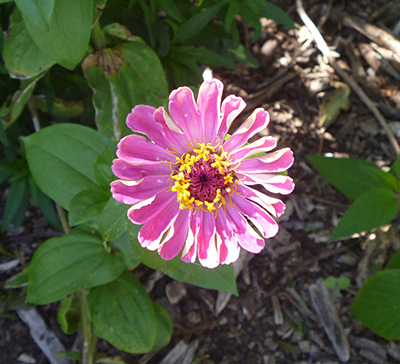
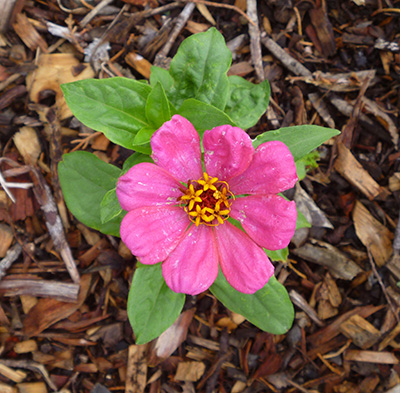
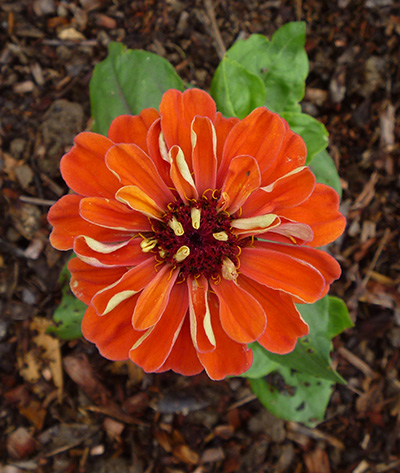
Zinnia.
Annual. Summer and autumn colour. Brightest and long lasting with great cut flowers that also attract the butterflies.
Catalogue: 1878 W.W. McCardle, Masterton.
Supplier: Koanga Institute, Wairoa.
Gifter: Celia Wade-Brown Mayoral Fund.
Planted: 2017. Flower bank. Horse paddock fence line.
Butterfly and bee friendly.